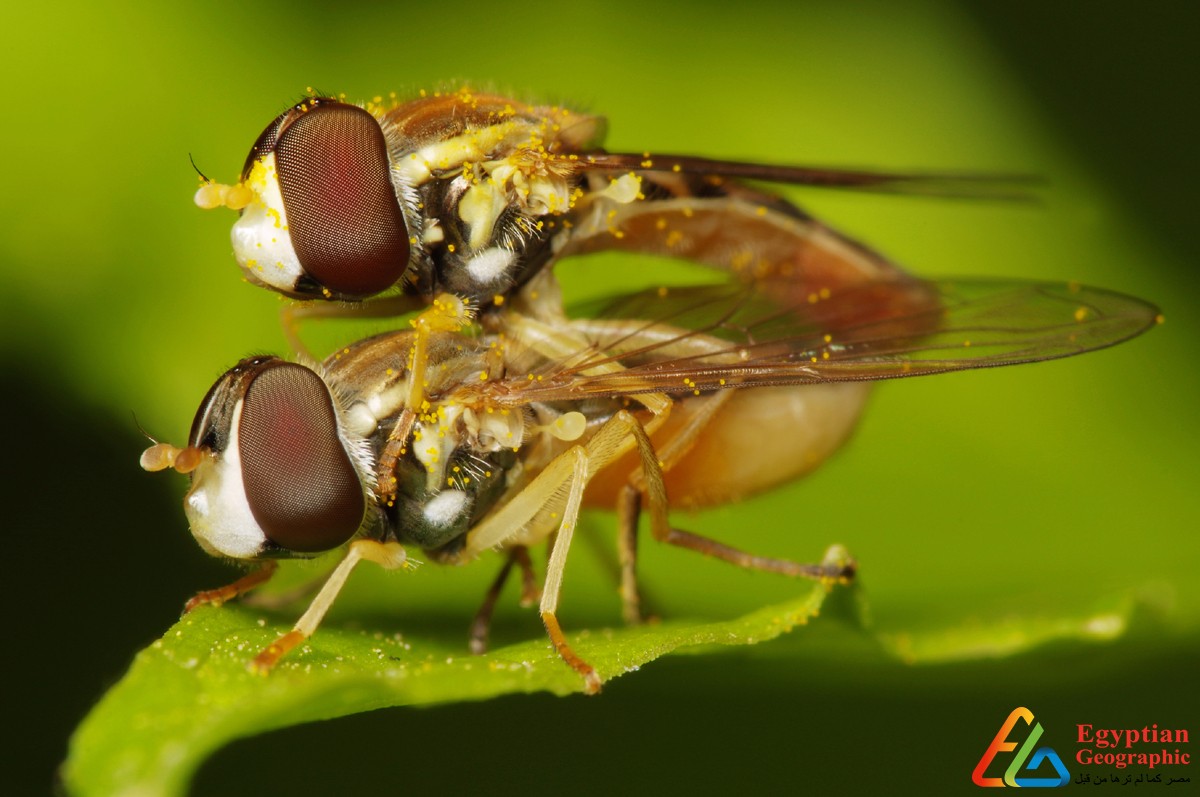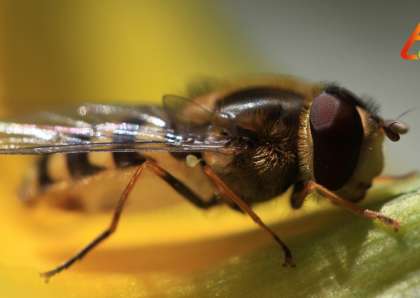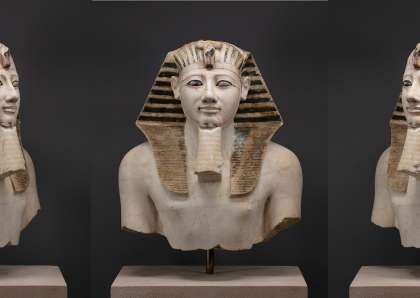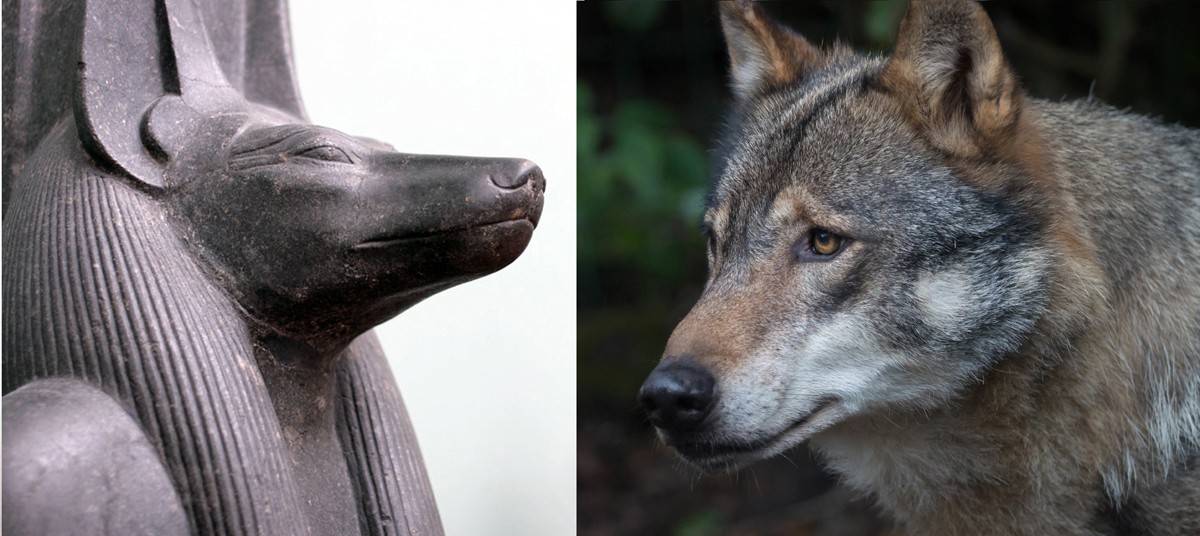Since the insect world is of such magnitude that we mentioned within the first part, and influences during this way, and even is plagued by man, providing his services and leaving harms, it absolutely was necessary to devote a science to the study of those microorganisms, so entomology came to light, or "Entomology", that science began in Appeared by the Swedish botanist "Carl Linnaeus" since the fifties of the eighteenth century, who devised a useful system for classifying plants and animals, and even named them. This science studies everything associated with the various insect worlds, from species, families, environments, nature of food, benefits and damages.
In Egypt, most entomologists study everything that's economical for these tiny creatures, and that they study their effect on production in every way. They study insect pests that cause crop corruption, ornamental trees, stored products, buildings, or the corruption of everything associated with human health, And animals, agricultural entomologists study insect pests for food and fabric, while forest entomologists study wood pests.

The role of medical entomologists, especially within the veterinary field, is proscribed to reducing the chance of these insects that cause disease to humans and animals, as they reduced the amount of insect pests by variety of means, the foremost important of which is that the draining of swamps on which mosquitoes and a few flies reproduce, the employment of pesticides and repellants, and also the use of animals that It feeds on the insect pests themselves, like the mantis and ladybirds that kill insect pests, so entomologists seek to safeguard them and increase their numbers.
"The Chinese domesticated the silkworm 2000 years ago.. and most entomologists in Egypt only care about its economic importance"
As we said, many varieties of insects are considered beneficial instead of harmful, and consistent with entomologists there are ten forms of these insects, as an example there's silkworm, which produces natural silk, and honey bees, which produce honey, beeswax, royal food, and also the coccid insect, people who secrete shellac and enter into the manufacture of paints and varnishes, and a few parasitic insects, which intrude internally or externally on some harmful insects and help humans get obviate them, and a few forms of insects that kill harmful weeds and save agricultural crops.

There are throwing insects, which go after damaged organic materials, whether or not they are plant or animal, and thus save life on earth, as some insects cause tumors for plants, and extracts from these tumors materials of medical importance and a few inks, and also some insects play a task within the transfer of seeds The pollen from one flower to a different during its visit to go after its nectar, and it also plays another role in building agricultural soil, turning it over and ventilating it with the tunnels it makes in it, and it contributes to uncovering many secrets of life, like the pomace fly within the development of genetics, and is employed in testing the sphere of toxicology .
In recent times, some scholars tend to think about all sorts of insects as beneficial to humans and therefore the environment, and it's not permissible to eliminate any of them, although this can not be applied, especially when there are some annoying insects inside the house Such as bugs, cockroaches, ants, and others, and below are a number of the foremost popular kinds of beneficial insects.

First: the silkworm:
In the past it absolutely was the foremost important insect on the earth because it produced most of the silk employed in the market, but today the assembly of natural silk has declined after the emergence of artificial silk, but it's still an insect of high importance, especially in geographical region, which remains the most source of natural silk, the Chinese knew it's been domesticated since 2000 years, and from the time it emerges from the egg until it turns into a virgin, it consumes about 90 grams of mulberry leaf, and one cocoon produces a silk thread 800-1200 yards long, or about 1000 meters, and a weight of two grams, which suggests that 650 cocoons It can produce quite one kilo of raw silk.
"Scale insect and bugs are utilized in the manufacture of cosmetics.. The blood of the beetle is employed to treat diseases of the urinary and reproductive organs"
Silk production is a crucial and major industry in many countries, especially Japan, China, Italy, France and Spain. These countries produce about 50 to 70 million pounds of raw silk annually, with a price of about 250 million Egyptian pounds, and there are other forms of domesticated silkworms apart from Silkworms, of the identical sex, in Asia, as an example, about 30 species of these worms that produce silk, but they're not domesticated, the foremost important of which are endemic to China, India and Japan.

Second: honey bees:
The most famous beneficial insect, and there are over 20 thousand species of bees on the face of the world, distributed on all continents of the planet, with the exception of Antarctica. The bees work to supply honey, which is one among the most effective food for any society, and it also works to pollinate flowers, which contributes to the assembly of Fruits of fruits, and a few of its products are involved within the production of the many medicines and coverings, and even the poison that results from his stings are often useful for treating some diseases.
Honeybee workers collect nectar from flowers to form honey, so we see them make about 40 to 80 thousand trips, during which they visit many flowers to gather enough nectar to create only 1 pound of honey, knowing that one trip may reach about 3 kilometers, meaning that one worker can fly throughout her life a distance adequate twice the circumference of the world to form one pound of honey, and therefore the wax is secreted from special glands located within the abdomen of the worker, which is after the worker digests a quantity of honey directly, and one pound of beeswax produces a quantity ranging between 3-20 pounds of honey in a very 24-hour period.

Third: Scale insect:
Some of the crusty insects are beneficial, especially the insect "Kerika Laka", which is native to India and Burma trees in Asia. It produces the substance "shellac" that it secretes over its body for defense. This material is employed within the manufacture of paints, varnishes, wood, metal polishing, hats making, and a few Inks, insulating materials, cylinders and linolim, which is employed to hide the ground of rooms, buttons, lichens, toys, industrial models for flowers, fruits and vegetables, and so as to gather one gram of shellac, we'd like about 300 thousand "kirika laka" insects, noting that almost 40 are produced. Million kilograms annually of that substance.
"20 thousand species of bees carry on earth.. The bee makes 80 thousand trips to provide a pound of honey"
It is worth noting that the planet has known shellac and its uses since 1590 AD, and has used it within the pharmaceutical industry for intestinal coating for tablets and beads, it's utilized in the shape of a 35% jolly solution for coating, and it's used as a 40% jolly solution within the protective coating of tablet nuclei in two layers, or In one layer, to guard it from moisture, before applying a diabetic coating or with a movie, it's also sometimes employed in food and cosmetic products.

Fourth: cosmetic insects:
Many people might not know that almost all of the cosmetics that ladies use are extracted from some insects, for instance the scaly insect extracts the red color, which is employed within the manufacture of lipstick and nail enamel, and although it's harmful insects, it's not harmful within the cosmetic industry. there's also a red mealybug, which lives in abundance on wild pear trees in Honduras, the island, Mexico, Peru, Spain and Algeria. Its body is dried, then crushed, to enter at the moment within the cosmetics industry, because it is employed within the treatment of respiratory illness, and a few diseases It takes about 150 thousand insects to supply one kilogram of powder within the bodies of those insects.
Fifthly: medical insects:
There is no doubt that some insects have medicinal value, and therefore the length of a person’s life on the surface of the world as he uses a number of them to treat some diseases, for instance the honey bee, some beetles, and kinds of flies and their larvae. Some wounds were healed when doctors put some sterile fly larvae it's also possible to isolate a particular substance that has the property of healing wounds from the secretions of the fly larvae, which substance is ready industrially and traded within the markets, and if its odorless, color and taste-free solution is applied, which doesn't cause any pain the least bit on the burn and wounds, it works to heal them.

The blood and internal organs of the beetle contain cantaradine, which is employed today within the treatment of some diseases of the urinary and reproductive systems, and this insect is found in abundance in both Spain and France, and through the nineteenth century the bodies of the honey bee were soaked in ethyl alcohol for a couple of month, while preserving it in an exceedingly place it's warm, and also the resulting infusion was employed in the treatment of some diseases, like diphtheria, contagious disease, bladder infections and skin wounds, and recently the secretion for honey bees was used as a source of vitamins in some cosmetic ointments, and within the treatment of the many aging diseases and anemia.
Sixth: Plant tumors:
Man knew plant tumors and their usefulness quite 25 centuries ago. within the fifth century BC, it had been discovered that the tumors on walnut trees, which grow in eastern Europe and western Asia, contain substances used as tonic and anti-toxins, or as materials for dyeing hair, wool and skin as they're used. Walnut leaf extracts are nowadays in abundance in leather dyeing.

There are other plant tumors that Somali women use for cosmetic purposes. The Turks also use cochineal materials for dyeing, resulting from red plant tumors found on oak trees, and tannin is found in abundance in many plant tumors.




































































Egyptian Site & magazine